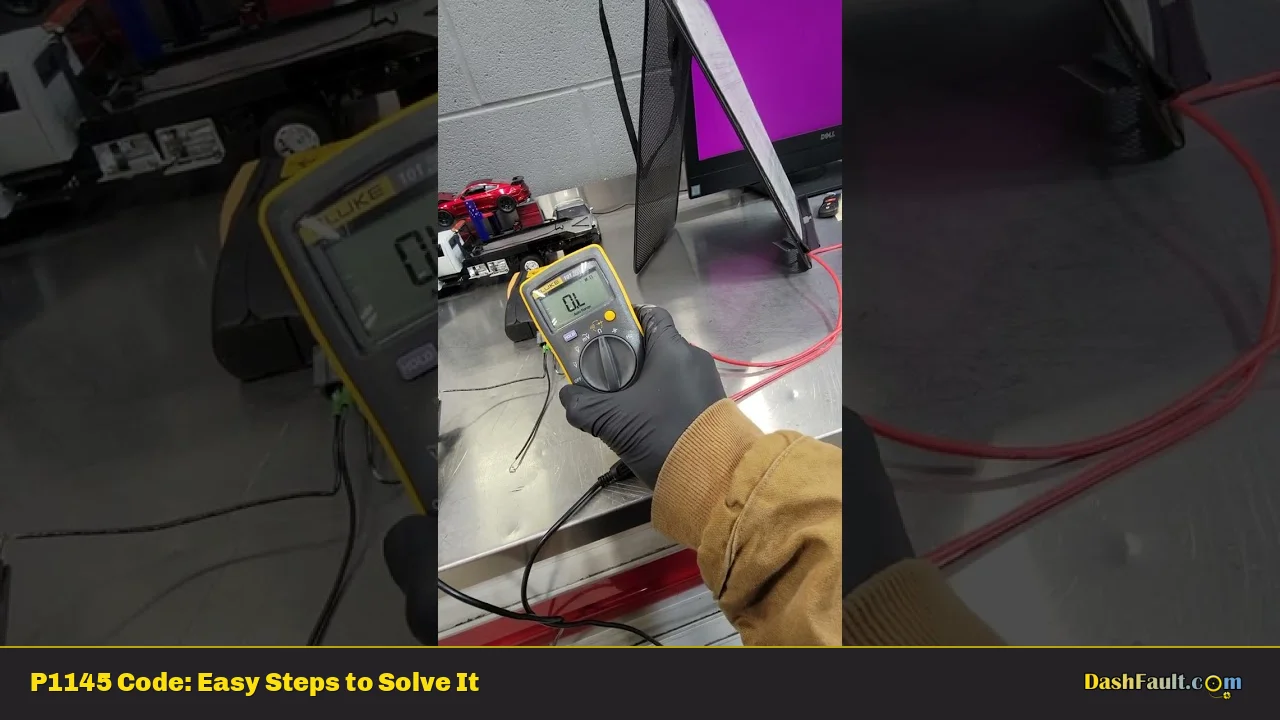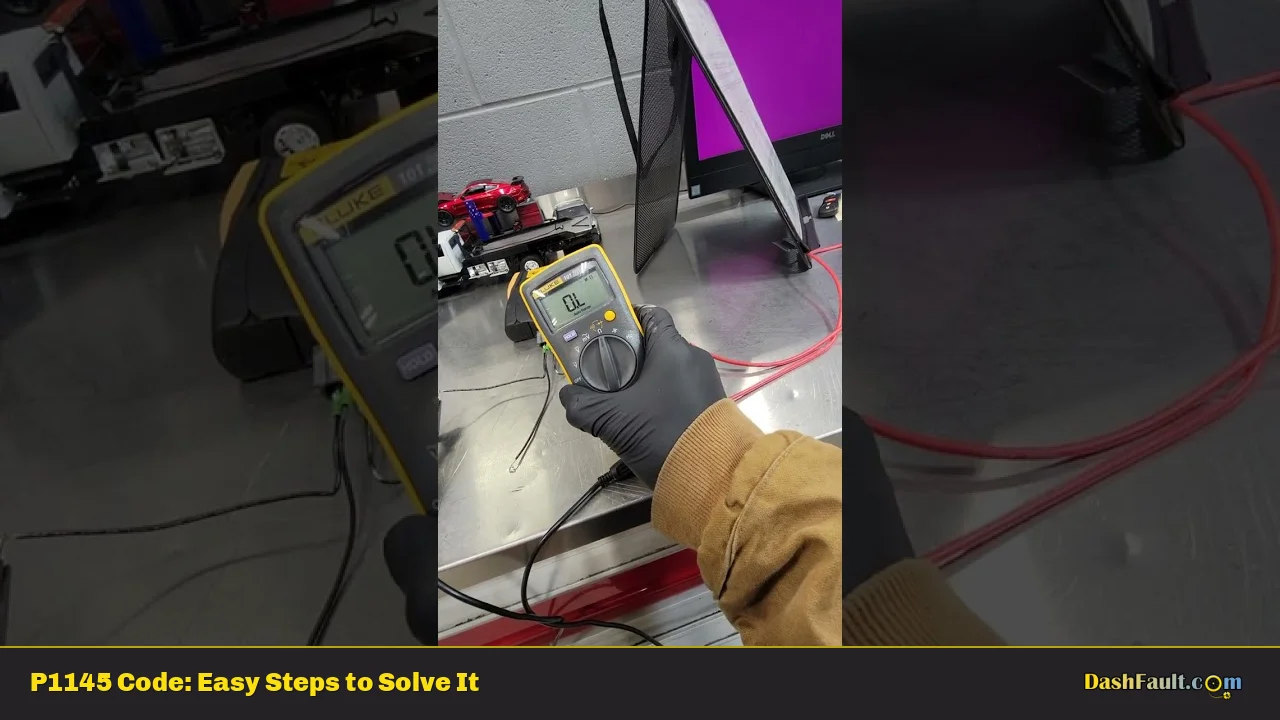The P1145 trouble code is a diagnostic trouble code (DTC) that indicates an issue related to the fuel rail/system pressure, specifically signaling that the pressure is too high. This code is part of the OBD-II system, which monitors various aspects of vehicle performance and emissions. When the P1145 code is triggered, it typically points to a malfunction in the fuel delivery system or related components, leading to potential engine performance issues such as poor fuel economy, rough idling, or stalling.
Understanding the implications of this code and its causes is crucial for vehicle owners and DIY mechanics who wish to maintain their vehicles effectively. This guide will provide a comprehensive overview of the P1145 code, including its meaning, common causes, symptoms, diagnosis, solutions, and cost estimates for repairs.
| P1145 Code Meaning | P1145 Code Common Causes |
|---|---|
| Fuel Rail/System Pressure – Too High | Faulty fuel pressure regulator |
| Fuel Injection Control ‘B’ High | Clogged fuel filter |
| Crankshaft Position Sensor B Circuit Malfunction | Faulty fuel injectors |
| BBV Sensor Circuit Low Voltage | Wiring issues or short circuits |
| Manufacturer Specific Code (MFG) | Faulty Engine Control Module (ECM) |
Symptoms of P1145 Code
When the P1145 code is present, drivers may experience a variety of symptoms that can affect vehicle performance:
- Check Engine Light: The most common indication is the illumination of the check engine light on the dashboard.
- Poor Fuel Economy: Increased fuel consumption due to improper fuel delivery can lead to higher operating costs.
- Rough Idling: The engine may run unevenly or stall at idle due to inconsistent fuel pressure.
- Reduced Engine Power: Drivers may notice a lack of acceleration or power when attempting to accelerate.
- Engine Stalling: In severe cases, the engine may stall unexpectedly while driving.
Technical Explanations
The P1145 code is associated with the vehicle’s powertrain control module (PCM), which monitors various sensors and components related to fuel delivery. The PCM uses data from these sensors to adjust fuel injection timing and quantity for optimal engine performance. When it detects that the fuel rail pressure exceeds specified limits, it triggers the P1145 code.
Key components involved include:
- Fuel Pressure Regulator: This component controls the pressure in the fuel rail. A malfunction can lead to excessive pressure.
- Fuel Injectors: These deliver fuel into the combustion chamber. Faulty injectors can cause irregular pressure readings.
- Wiring and Connectors: Damaged wiring or poor connections can lead to incorrect sensor readings, resulting in erroneous codes.
Step-by-Step Diagnosis
Diagnosing a P1145 code involves several steps:
- Scan for Codes: Use an OBD-II scanner to confirm that P1145 is present and check for any additional codes that might provide more context.
- Visual Inspection: Inspect wiring and connectors related to the fuel system for signs of damage or corrosion.
- Check Fuel Pressure: Use a fuel pressure gauge to measure the actual pressure in the fuel rail. Compare this with manufacturer specifications.
- Inspect Fuel Components:
- Check the fuel pressure regulator for proper operation.
- Inspect the fuel filter for clogs.
- Examine fuel injectors for leaks or malfunctions.
- Test Electrical Components: Use a multimeter to test voltage and ground at relevant connectors and sensors.
- Clear Codes and Test Drive: After performing repairs or adjustments, clear the codes and take the vehicle for a test drive to see if the check engine light returns.
Solution Methods
Addressing a P1145 code typically involves one or more of the following solutions:
- Replace Fuel Pressure Regulator: If testing indicates that the regulator is faulty, replacing it will often resolve high-pressure issues.
- Change Fuel Filter: A clogged filter can restrict flow and cause pressure buildup; replacing it may restore normal operation.
- Repair Wiring Issues: If damaged wiring is found during inspection, repair or replacement may be necessary.
- Replace Faulty Injectors: If injectors are leaking or malfunctioning, they should be replaced to ensure proper fuel delivery.
- ECM Replacement/Repair: In rare cases where other solutions fail, testing may indicate that the ECM itself is faulty and requires replacement or reprogramming.
Cost Estimates
The cost of repairs associated with a P1145 code can vary widely based on several factors:
- Fuel Pressure Regulator Replacement: $100 – $300 (parts and labor)
- Fuel Filter Replacement: $50 – $150
- Fuel Injector Replacement: $150 – $600 per injector
- Wiring Repairs: $100 – $200 depending on complexity
- ECM Replacement: $400 – $1,200 depending on vehicle make/model
It’s advisable to obtain multiple quotes from certified mechanics before proceeding with repairs.
Warnings and Recommendations
- Always consult your vehicle’s service manual for specific diagnostic procedures and specifications related to your make and model.
- If you are not comfortable performing these diagnostics or repairs yourself, seek assistance from a professional mechanic.
- Ignoring a P1145 code can lead to more severe engine issues over time, including potential engine damage due to improper fuel delivery.
Frequently Asked Questions About P1145
- What does a P1145 code mean?
The P1145 code indicates that there is an issue with fuel rail/system pressure being too high. - Can I drive my car with a P1145 code?
While it may be possible to drive short distances, it’s not recommended as it could lead to further engine damage. - What are common symptoms associated with this code?
Common symptoms include poor fuel economy, rough idling, reduced power, and stalling. - How do I diagnose a P1145 trouble code?
Use an OBD-II scanner to confirm the code, perform visual inspections on relevant components, check fuel pressure, and test electrical connections. - What should I do if I see this code?
Start by diagnosing using proper tools; if unsure about repairs, consult a professional mechanic. - Is it safe to clear codes without fixing them?
No; clearing codes without addressing underlying issues can lead to further problems down the line. - What could cause a false reading for this code?
Poor wiring connections or faulty sensors can sometimes trigger false readings. - How much does it cost to fix a P1145 issue?
The cost varies widely but can range from $50 for minor fixes up to over $1,200 for ECM replacement.
In conclusion, understanding the P1145 trouble code is essential for maintaining your vehicle’s performance. By following systematic diagnosis steps and addressing potential causes promptly, you can prevent further complications and ensure your vehicle runs smoothly. Always prioritize safety by consulting professionals when necessary and keeping abreast of your vehicle’s maintenance needs.

